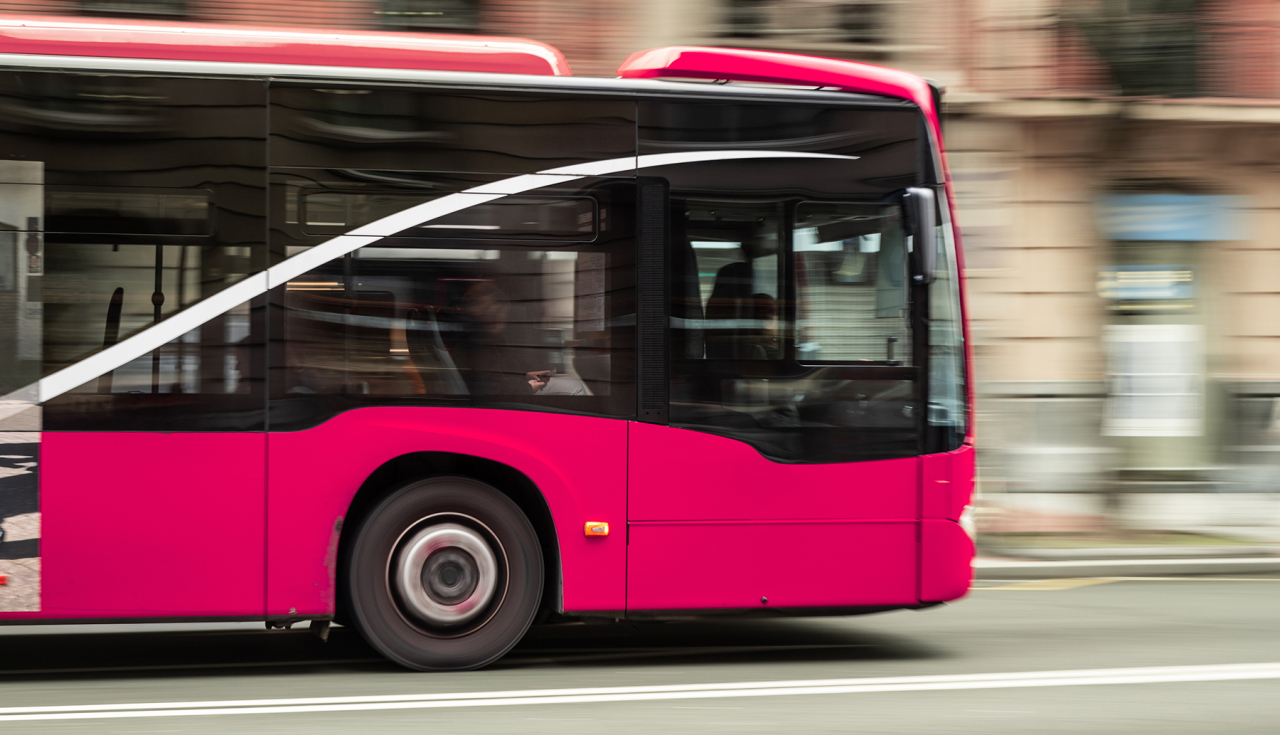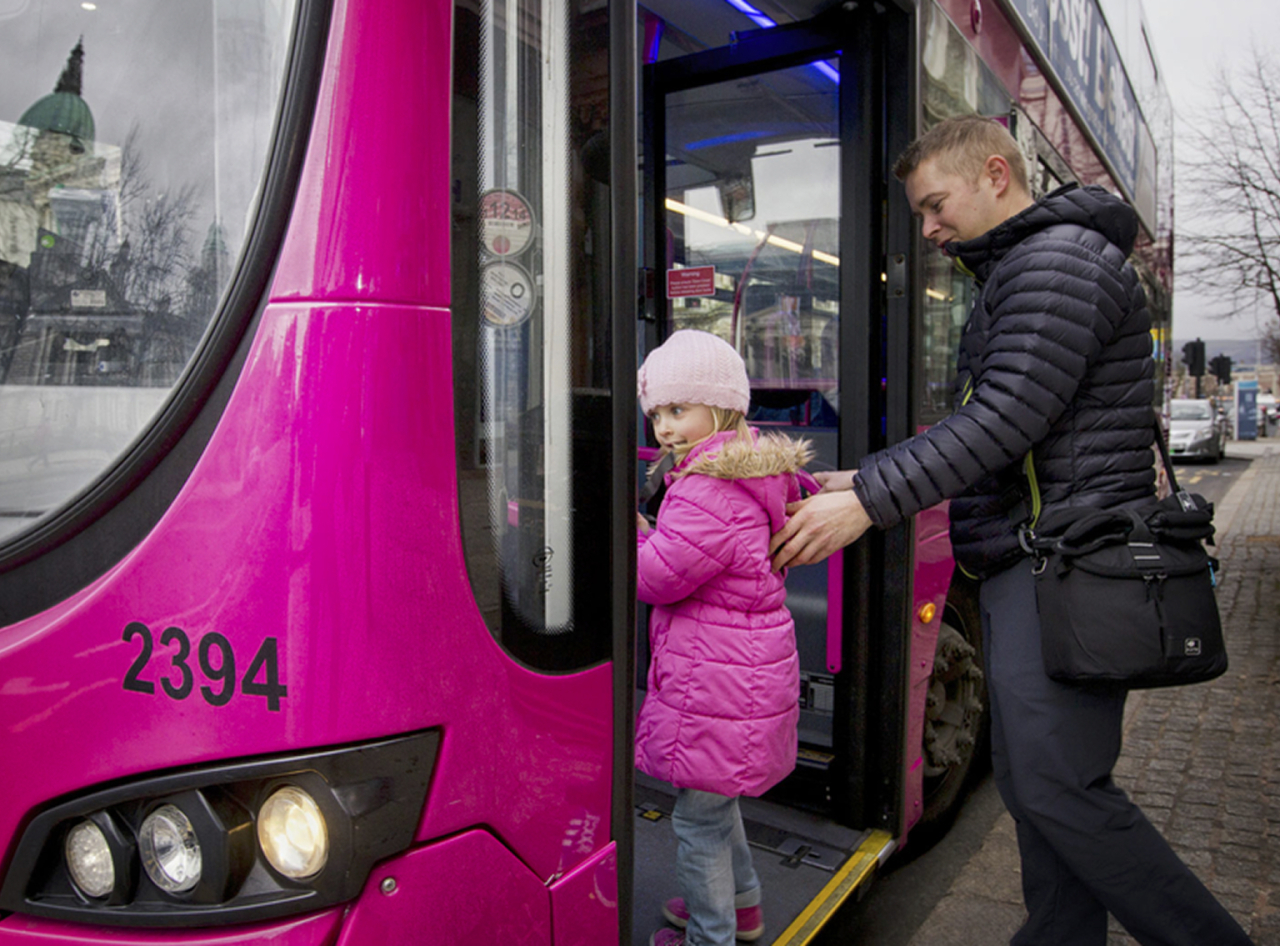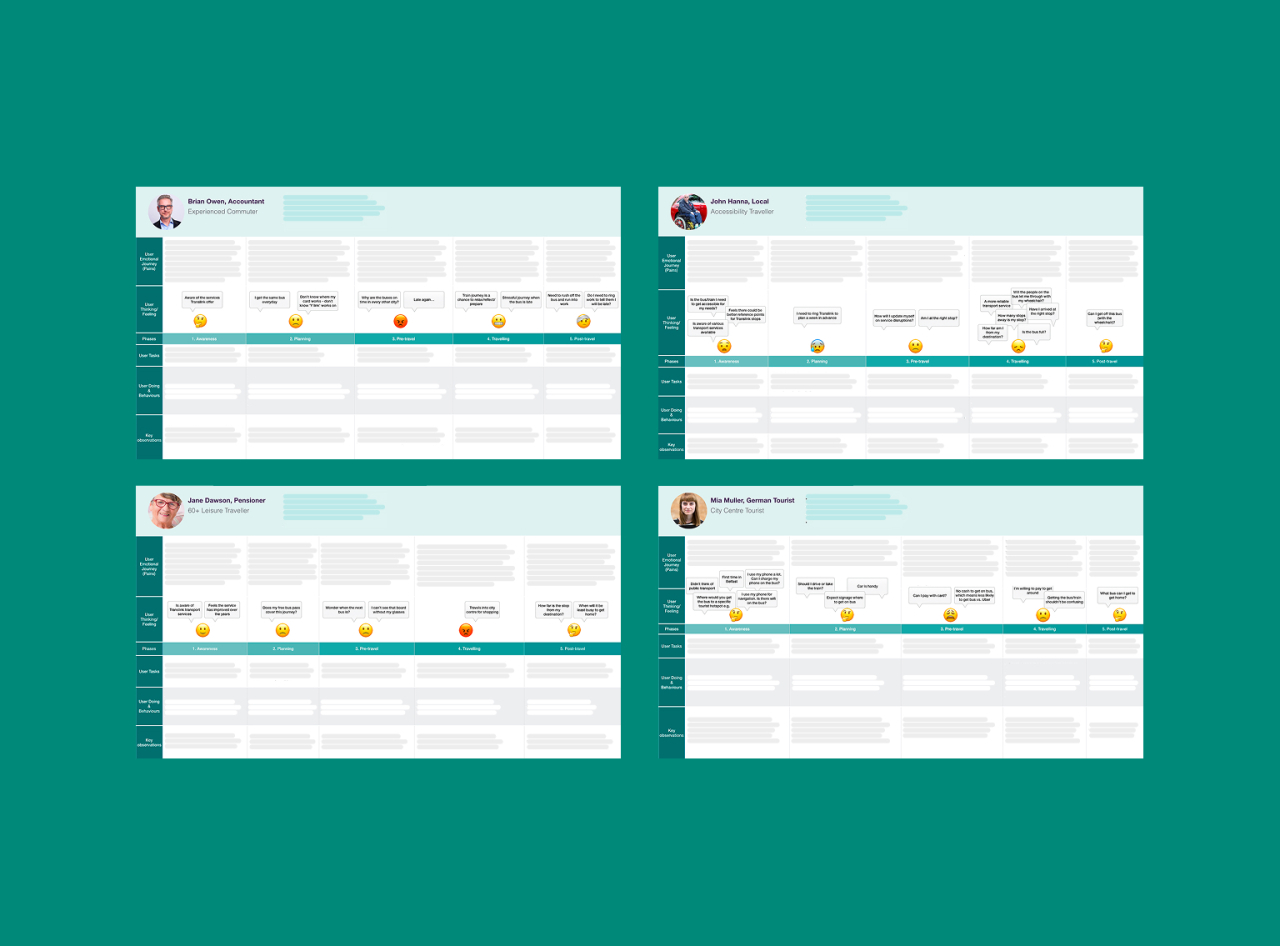Shaping Belfast’s Glider Experience with User-Centred Design

The Problem
Translink, Northern Ireland’s public bus and rail provider, enables more than 200,000 daily journeys. With the introduction of Belfast’s new Bus Rapid Transit (BRT) service, Glider, they needed to deeply understand how travellers experienced public transport in the city centre.
Passengers struggled with awareness, navigation, ticketing, and accessibility. Even simple actions like choosing the right stop or understanding maps created anxiety when systems were not clear or consistent.

The Idea
We worked with Translink stakeholders, including internal teams, accessibility groups, city ambassadors, and tourism partners, to define key experience themes.
Then we took to the streets:
45 interviews with tourists, commuters, infrequent riders, and reduced-mobility passengers
Observation of real-world travel behaviours
Usability testing on maps, signage, and route materials
Evaluation of the Translink app and digital touchpoints
Benchmarking against best practice from other global cities
From this, we identified actionable opportunities around map clarity, ticketing, accessibility, and real-time information.

The Outcome
We translated research into a practical, user-centred framework that shaped the design of the Glider service and informed future initiatives.
Clearer mapping and signage
Seamless digital-to-real navigation
More inclusive design for passengers with impairments
Improved confidence for occasional and first-time users
A strategic framework for future mobility services
“Ideas+Outcome’s work has set in motion a clear set of user-centred, rationalised initiatives that have become central to the design of our future services.”
- Clare Costello, Head of Digital CX, Translink
FAQs
-
How did Ideas + Outcomes help shape Translink’s Glider service?
By conducting user research, usability testing, and benchmarking, then translating insights into a user-centred design framework.
-
What types of passengers were included in the research?
Tourists, commuters, infrequent riders, and passengers with reduced mobility.
-
What improvements resulted from the project?
Clearer maps and signage, seamless navigation across digital and physical touchpoints, and more inclusive design for passengers with impairments.
-
How did the research benefit occasional users?
It reduced anxiety and increased confidence for those less familiar with the system.